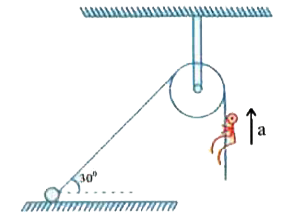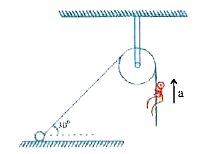State the function ofa The wooden handle at the end of the test tube holder.b The asbestos fixed at the centre of the wire gauze.c The clamp mounted on the rod of a retort stand.d The air regulator in a Bunsen burner.e The tap at the base of a burette.
a The wooden handle at the end of test tube being a poor conductor of heat makes holding the test tube holder easy. b The asbestos fixed at the centre of the wire gauze initiates even distribution of heat to the bottom of the apparatus. It also prevents glass apparatus from cracking. c The clamp mounted on the rod of a retort stand helps in holding the apparatus and adjusting its level upwards or downwards. d The air regulator has holes and is used for regulating the flame. e The tap at the base of the burette helps in removing the measured liquid drop wise.
Related Solutions
In a Kundt's tube experiment , with a wooden rod along , clamped at the middle , the lycopodium powder gets heated up at regular intervals of , the experiment being performed with air . If the frequency of vibrations be , find the velocity of sound in air and in the wooden rod.
View SolutionIn a Kundt's tube experiment , with a wooden rod along , clamped at the middle , the lycopodium powder gets heated up at regular intervals of , the experiment being performed with air . If the frequency of vibrations be , find the velocity of sound in air and in the wooden rod.
View SolutionHow is an iron plank fixed to a wooden handle in earthwork tools? Clarify.
View SolutionHow the iron blade is fixed into a wooden handle in tolls used to dig the soil?
View SolutionOne end of a uniform rod of mass m and length / is clamped. The rod lies on a smooth horizontal surface and rotates on it about the clamped end at a uniform angular velocity . The force exerted by the clamp on the rod has a horizontal component.
View SolutionA glass test tube with a plane base has a diameter of 4 cm and mass 30 g. Centre of gravity of the empty test tube is at a height of 10 cm from the base. Find the amount of water to be taken in the test tube so that when it floats vertially, its centre of gravity shifts to the midpoint of the immersed portionof the tube.
View SolutionApparatus: Test tube, glass rod, beaker, Bunsen burner, etc.
Chemicals: Hydrochloric acid, ammonia solution, magnesium strip, quick lime, etc.
Activity 1: Take a small amount of hydrochloric acid in a test tube. Heat the test tube. Dip a glass rod in the ammonia solution and hold on the top of the test tube. You will observe a white smoke emanating from the tip of the glass rod. What must have happened?View SolutionApparatus: Test tube, glass rod, beaker, Bunsen burner, etc. Chemicals: Hydrochloric acid, ammonia solution, magnesium strip, quick lime, etc. Activity 1: Take a small amount of hydrochloric acid in a test tube. Heat the test tube. Dip a glass rod in the ammonia solution and hold on the top of the test tube. You will observe a white smoke emanating from the tip of the glass rod. What must have happened?
View SolutionApparatus: Test tube, glass rod, beaker, Bunsen burner, etc.
Chemicals: Hydrochloric acid, ammonia solution, magnesium strip, quick lime, etc.
Activity 1: Take a small amount of hydrochloric acid in a test tube. Heat the test tube. Dip a glass rod in the ammonia solution and hold on the top of the test tube. You will observe a white smoke emanating from the tip of the glass rod. What must have happened?View SolutionArrange the following steps involved in the prepartion of oxygen from in proper order.
(a) Content of the test tube is heated.
(b) A mixture of finely ground is taken in a test tube.
(c) The open end of the test tube is plugged with cotton.
(d) Delivery tube is taken out.
(e) The test tube is fixed in a slanting position.
(f) Bunsen burner is put off.
(g) Oxygen is collected by downward displacement of water.View SolutionArrange the following steps involved in the preparation of oxygen from in a proper order.
(1) content of the test tube is heated
(2) A mixture of finely ground and is taken in a test tube.
(3) The open end of the test tube is plugged with cotton.
(4) delivery tube is taken out
(5) The test tube is fixed in a slanting position.
(6) Bunsen burner is put off.
(7) Oxygen is collected by downward displacement of water.View SolutionA uniform disc of radius 5.0 cm and mass 200g is fixed at its centre to a metal wire, the other end of which is fixed with a clamp. The hanging disc is rotated about the wire through an angle and is released. If the disc makes torsional oscillations with time period 0.20s, find the torsional constant of the wire.
View SolutionA uniform disc of radius 5.0 cm and mass 200g is fixed at its centre to a metal wire, the other end of which is fixed with a clamp. The hanging disc is rotated about the wire through an angle and is released. If the disc makes torsional oscillations with time period 0.20s, find the torsional constant of the wire.
View SolutionA uniform disc of radius 5.0 cm and mass 200g is fixed at its centre to a metal wire, the other end of which is fixed with a clamp. The hanging disc is rotated about the wire through an angle and is released. If the disc makes torsional oscillations with time period 0.20s, find the torsional constant of the wire.
View SolutionA light stright fixed at one end to a wooden clamp on a ground passes over a fixed pulley and hangs at the other side. It makes an angle with the ground. A boy weighing 60 kg climbs up the rope. The wooden clamp can tolerate upto vertical force 360N. Find the maximum acceleration in the upward direction with which the boy can climb safely. The friction of pulley and wooden clamp may be ignored (g )
 View Solution
View SolutionA light stright fixed at one end to a wooden clamp on a ground passes over a fixed pulley and hangs at the other side. It makes an angle with the ground. A boy weighing 60 kg climbs up the rope. The wooden clamp can tolerate upto vertical force 360N. Find the maximum acceleration in the upward direction with which the boy can climb safely. The friction of pulley and wooden clamp may be ignored (g )
 View Solution
View SolutionA light stright fixed at one end to a wooden clamp on a ground passes over a fixed pulley and hangs at the other side. It makes an angle 30^@ with the ground. A boy weighing 60 kg climbs up the rope. The wooden clamp can tolerate upto vertical force 360N. Find the, maximum acceleration in the upward direction with which the boy can climb safely. The friction of pulley and wooden clamp may be ignored (g = 10 m//s^2)
View SolutionA light stringht fixed at one end to a wooden clamp on a ground passes over a fixed pulley and hangs at the other side. It makes an angle with the ground . A boy weighing 60kg climbs up the rope. The wooden clamp can tolerate upto vertical force 360 N. Find the, maximum acceleration in the upward direction with which the boy can climb safely .
The friction of pulley and wooden clamp may be ignored
 View Solution
View SolutionOne end of a uniform rod of mas m and length l is clamped. The rod lies on a smooth horizontal surface and rotates on it about the clamped end at a uniform angular velocity . The force exerted by the clamp on the rod has a horizontal component
View SolutionOne end of a uniform rod of mass m and length l is clamped. The rod lies on a smooth horizontal surface and rotates on it about the clamped end at a uniform angular velocity . The force exerted by the clamp on the rod has a horizontal component.
View Solution
